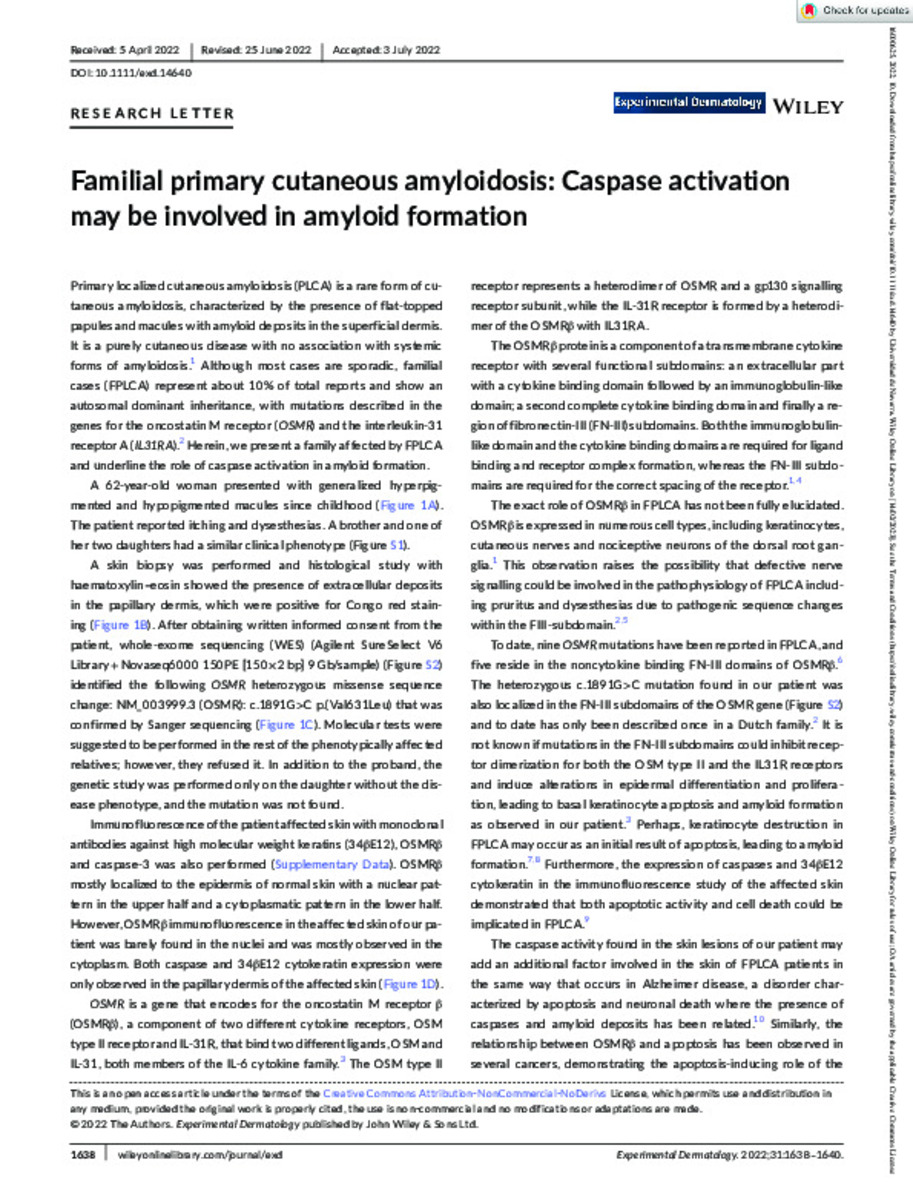Familial primary cutaneous amyloidosis: Caspase activation may be involved in amyloid formation
Palabras clave :
Amyloidosis
Apoptosis
Caspases
Fecha de publicación :
2022
Nota:
This is an open access article under the terms of the Creative Commons Attribution-NonCommercial-NoDerivs License
Cita:
Antoñanzas, J. (Javier); Pelacho-Samper, B. (Beatriz); Alkorta-Aranburu, G. (Gorka); et al. "Familial primary cutaneous amyloidosis: Caspase activation may be involved in amyloid formation". Experimental Dermatology. 31 (10), 2022, 1638 - 1640
Aparece en las colecciones:
Estadísticas e impacto
0 citas en

0 citas en

Los ítems de Dadun están protegidos por copyright, con todos los derechos reservados, a menos que se indique lo contrario.







